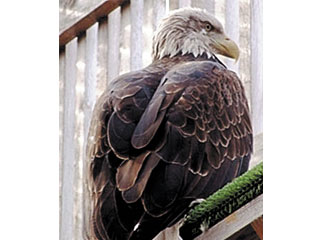By Lee Allen, Today correspondent
Story Published: May 12, 2009

Photo courtesy Iowa Tribe of Oklahoma
Despite being in the middle of troubled economic times, millions of federal
dollars have been made available to help wildlife and habitat.
Interior Secretary Ken Salazar, working with the U.S. Fish and Wildlife
Service, announced a series of grants to states for the conservation of
imperiled species, land acquisition as part of endangered species
conservation, and millions of dollars specifically to Native American tribes
for a variety of habitat and wildlife conservation work.
Forty-one Native American tribes in 16 states will receive $7 million in
competitive federal grants to undertake a wide variety of conservation
projects.
“Tribes manage nearly 100 million acres of land in the U.S., land that
provides important habitat for some of our most treasured species,” Salazar
said. “This program provides crucial financial support to tribal governments
to help them manage and improve their fish and wildlife heritage for the
benefit of all. Projects funded by these grants target some of the most
imperiled species and habitats in the United States. They’re also among the
most effective because they are tied to well-thought-out plans that identify
the highest priorities where we can make the biggest difference for
imperiled species.”
Since inception of the highly competitive Tribal Wildlife Grants program in
2003, more than $50 million has been awarded to federally recognized Indian
tribes, money that allows them to manage, monitor and conserve important
fish and wildlife resources.
“FWS and the tribes share strong natural resource stewardship values,” said
Benjamin Tuggle, FWS southwest regional director. “It is part of our mission
to work with others to conserve, protect and enhance fish, wildlife, plants
and their habitats for the continuing benefit of the American people. We’re
pleased to assist in the Tribal Wildlife Grant Program to achieve these
goals.”
In May 2008, FWS issued a request for grant proposals to benefit habitat,
fish and wildlife including species not hunted or fished. Applications were
due in September 2008 and a total of 101 proposals were submitted.
“The Western region is the most competitive because there’s a lot of work
being done by tribes,” said FWS Southwest Region Native American Liaison Joe
Early, citing an example of an eagle aviary/rehabilitation center unique to
the region.
Tribes in Arizona, New Mexico, Oklahoma and Texas have received more than $8
million. Through the program’s first six years, nearly 300 grants were
awarded. This year, 101 proposals were submitted with 41 selected for
funding.
This year’s funded projects run the gamut of wildlife conservation
endeavors, from restoring habitat to conducting wildlife surveys, and from
fishery studies to invasive weed management. Individual awards cap at
$200,000 maximum. “There tends to be a trend toward habitat restoration in
the Western states along with programs to better manage or reintroduce
culturally significant species,” Early said.
Last year, the Iowa Tribe of Oklahoma received $62,000 to manage its
Wildlife Conservation Areas which include Bah Kho-Je Xla Chi, the Grey Snow
Eagle House, the first federally-funded eagle rehabilitation facility in the
U.S. Aviary Manager Victor Roubidoux has run the facility since 2006,
housing eagles that are non-releasable due to injuries and in the process,
gathering naturally-molted feathers for distribution to tribal members to
use in cultural ceremonies. The Iowa Tribe is the first in the country to be
a permitted eagle rehabilitator. This year it was awarded $200,000 to expand
its 100-foot-long flight cages and mews (smaller pens) in support of
conserving the national symbol.
Additional grants involving eagles included Arizona’s Hopi Tribe, awarded
$200,000 to map habitat of eagle prey. The Navajo Nation received $200,000
to monitor the annual occupancy and reproduction of golden eagles on Hopi
and Navajo Nation lands during the 2009 reproductive season.
Last year, the Colorado River Indian Tribes of Arizona received nearly
$83,000 to protect mesquite bosques that line the banks of the Colorado
River and are culturally important to the tribes and biologically important
to many migratory birds. This year, the Cocopah Tribe received $130,000 to
initiate riparian ecosystem restoration efforts along the Lower Colorado
River.
New Mexico’s mule deer and elk are of cultural significance to the Santa Ana
Pueblo who received $200,000 to develop a comprehensive management plan for
the species.
In Oklahoma, the Osage Nation received $135,000 in funds to re-introduce the
Neosho mucket, a state-endangered mussel species historically found on the
Osage Reservation. Other funds dedicated to propagation of culturally
significant and imperiled freshwater mussels ($190,000) went to the Peoria
Tribe of Indians of Oklahoma.
“The benefits of these grants go far beyond the dollar amounts involved,”
Tuggle said. “The partners in stewardship developed in implementing the
grants helps ensure that fish, wildlife and habitat survives and thrives.”
© 1998 - 2009 Indian Country Today. All Rights Reserved To subscribe or visit go to: http://www.indiancountry.com